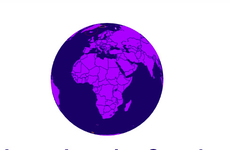
The SCARF is Able to Capture 156.3 Trillion Frames per Second
A team of researchers at the Institut national de la recherche scientifique created the SCARF, which stands for swept-coded aperture real-time femtophotography. It is a camera that can shoot images at 156 terahertz to its own pixels, meaning that it captures 156.3 trillion frames per second. The camera is a boundary-pushing camera that studies micro-events which captures extremely fast functions like absorption within a semiconductor.
INRS communication officer Julie Robert noted in a statement, “SCARF overcomes these challenges. Its imaging modality enables ultrafast sweeping of a static-coded aperture while not shearing the ultrafast phenomenon. This provides full-sequence encoding rates of up to 156.3 THz to individual pixels on a camera with a charge-coupled device (CCD). These results can be obtained in a single shot at tunable frame rates and spatial scales in both reflection and transmission modes.”
Image Credit: Institut national de la recherche scientifique
INRS communication officer Julie Robert noted in a statement, “SCARF overcomes these challenges. Its imaging modality enables ultrafast sweeping of a static-coded aperture while not shearing the ultrafast phenomenon. This provides full-sequence encoding rates of up to 156.3 THz to individual pixels on a camera with a charge-coupled device (CCD). These results can be obtained in a single shot at tunable frame rates and spatial scales in both reflection and transmission modes.”
Image Credit: Institut national de la recherche scientifique
Trend Themes
1. Ultra-high-speed Imaging - Opportunity for capturing micro-events and fast functions with unprecedented detail using ultra-fast multi-frame cameras.
2. Femtophotography Advancements - Innovative techniques in capturing femtosecond phenomena with the SCARF camera for scientific research and analysis.
3. Real-time Pixel Capture - Efficient method of encoding up to 156.3 THz to individual pixels, enabling high-speed sequential imaging for various applications.
Industry Implications
1. Scientific Research - Potential for revolutionizing scientific imaging techniques and enabling new discoveries using ultra-fast multi-frame cameras.
2. Semiconductor Technology - Disruptive innovation opportunities for studying absorption processes within semiconductors with ultra-fast imaging capabilities.
3. Photography and Imaging - Transformative applications in photography and imaging technologies with the advancement of ultra-fast pixel capture capabilities.
6.1
Score
Popularity
Activity
Freshness























